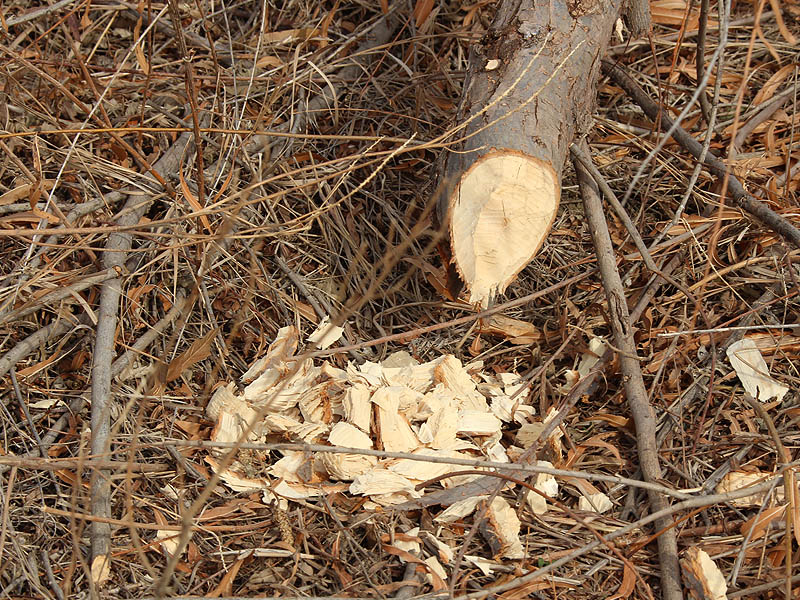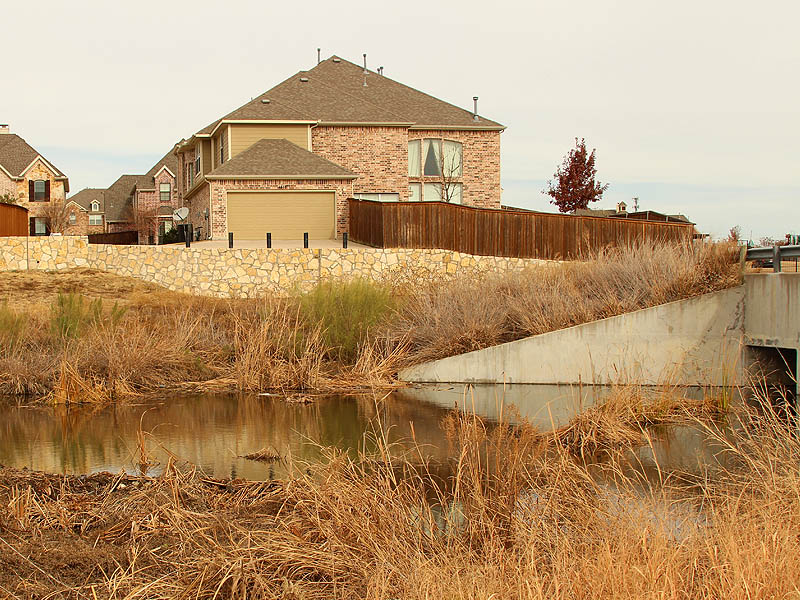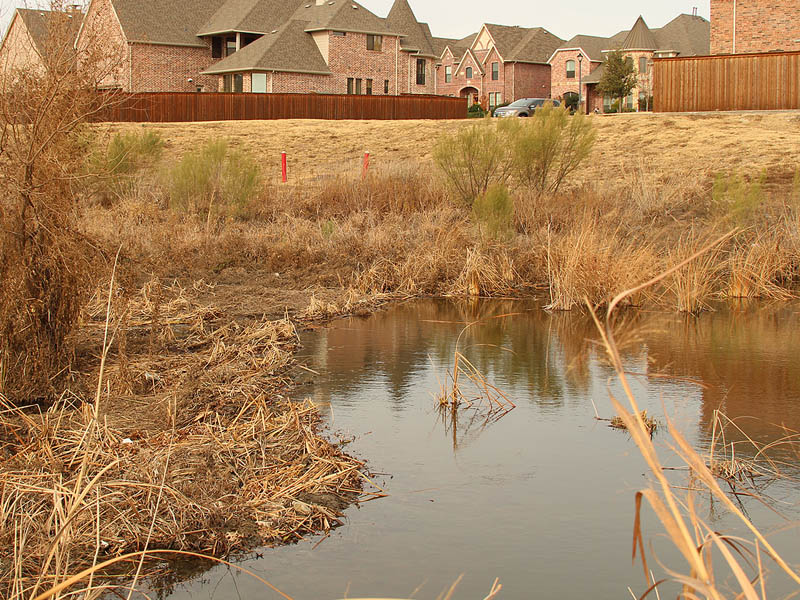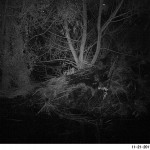For this project we explored two stream beds for the purposes of observing and documenting evidence of Beaver activity. The small creeks we chose were located at opposite corners of an approximately six square mile rectangle of suburban North Texas.
Beaver sign was abundance and easy to find in these areas. The evidence we found included felled trees, dams, lodges, slides, and Beaver skeletal remains. We found a total of five dams in the areas we explored—four active and one that had been recently destroyed by people. The locations of the Beaver dams are marked on the map below:

Beaver Dam One
This dam has created an interesting pond surrounded by almost otherworldly-looking habitats. The dam here is made up mostly of branches and mud, and probably best represents what most people imagine when they think of a Beaver dam. All of the other dams we found were constructed almost entirely of reeds and mud—adobe dams.







Beaver Dam Two
This is the dam that was recently destroyed. This time last year the dam was intact and was actively maintained by the resident Beavers. Evidently, somebody took advantage of the low water levels caused by the extended drought, and used the opportunity to remove a large section of the dam sometime during the summer.
Beavers are not that easily defeated, however. There is still ample evidence of their efforts to be found at this site, and much of it is very recent. My guess is, that if left unmolested, the Beavers will soon have this dam reconstructed.




Beaver Dam Three
All three of the dams in the southwest corner of the survey area were built in close proximity to bridges. Something about these structures seem to inspire Beavers to locate nearby. The Beavers at this spot have created a large pond that attracts a variety of different wildlife. While on site, we observed Gadwalls, Mallards, Great Egrets, and Red-eared Sliders.
This Beaver pond is unique in that of the five it is the only one with an obvious lodge. The Beaver’s den is located just next to the bridge, and is constructed of a pile of branches and mud.
The Beavers took down many trees when they moved into this spot—mostly Black Willows. They also worked hard to clear their newly formed pond of reeds and other vegetation so that the vast majority of it is open and unobstructed. This may account for this pond’s appeal to other types of wildlife.







Beaver Dam Four
This is the newest dam of the five. Construction almost certainly started within the last two months or so, and it is on going. The dam is complete, and the pond is full, but most of the flooded vegetation still remains. Through the rest of the winter and spring the Beavers will be working diligently to remove as much of it as they can.






Beaver Dam Five
This is the oldest dam on this section of the creek. Many years ago a pioneering Beaver built a dam here, taking down many of the ornamental trees in a nearby park in the process. The neighborhood’s Home Owner’s Association quickly took action to have the offending Beavers removed, and the dam fell into disrepair for a many years.
Recently this has changed. The dam’s integrity has been restored, and there is ample evidence of recently Beaver activity in and around the newly expanding pond.











Is there someone in East Texas who installs river levelers?